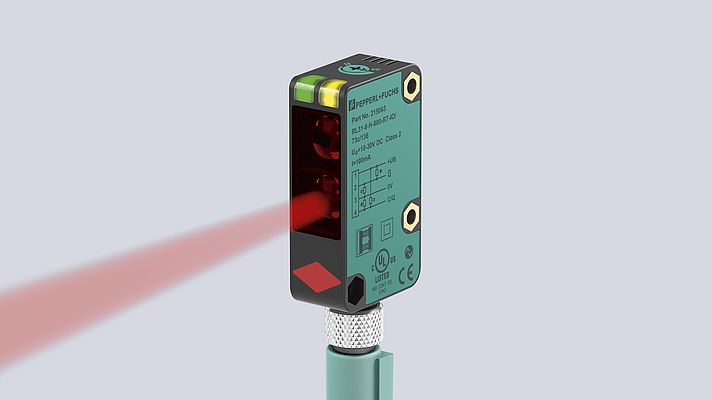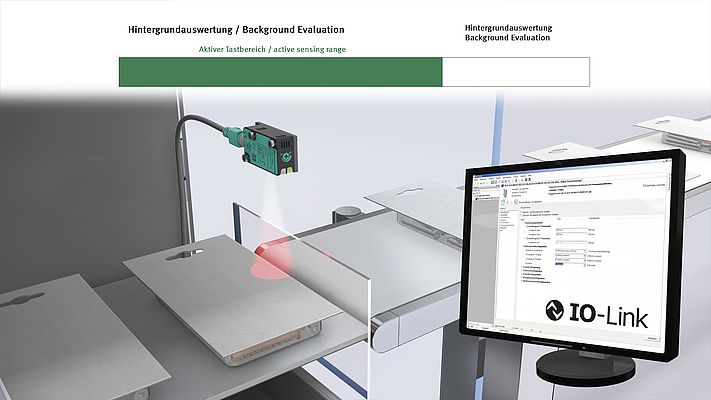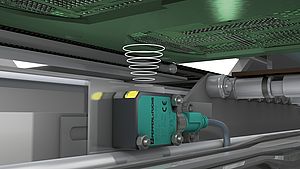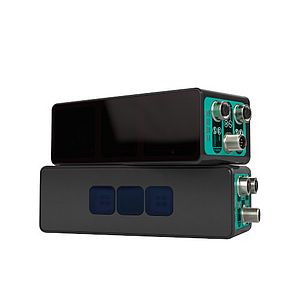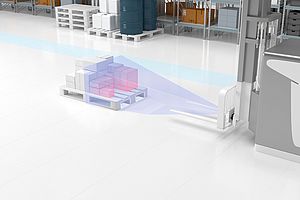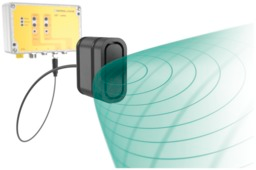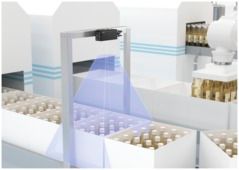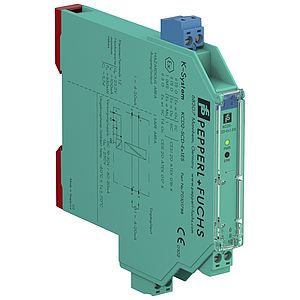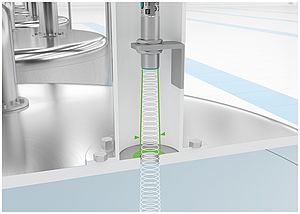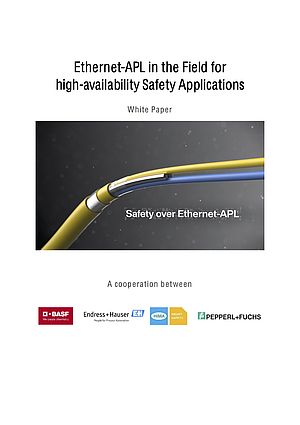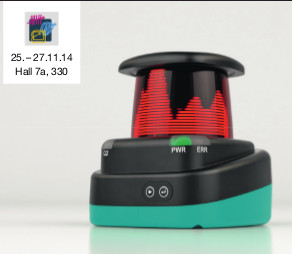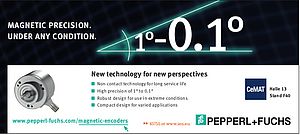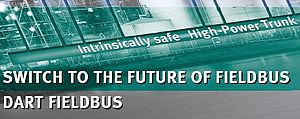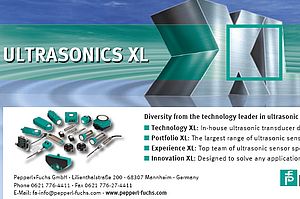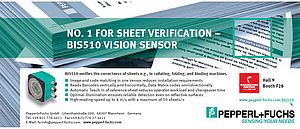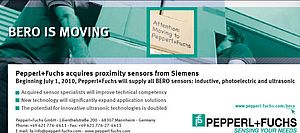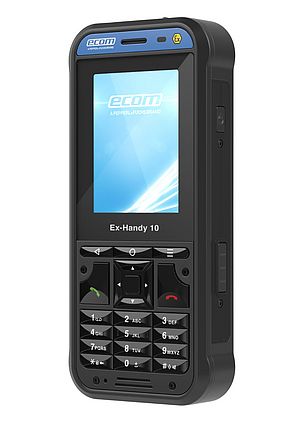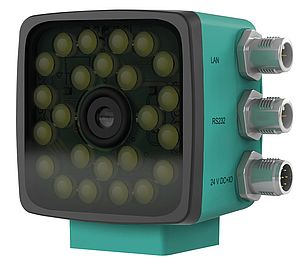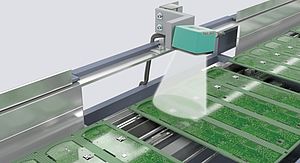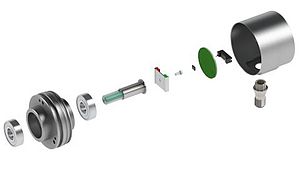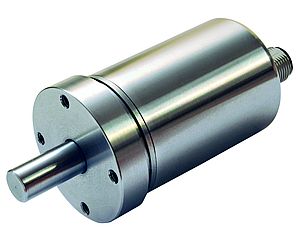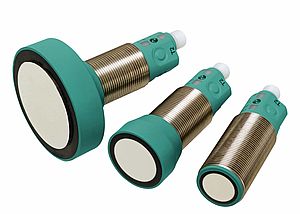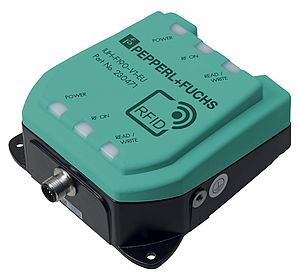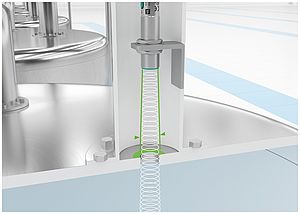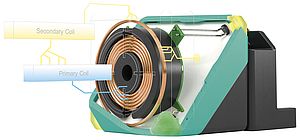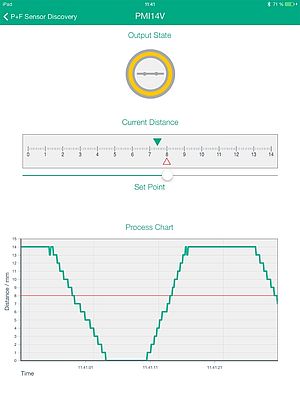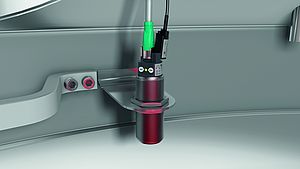For some time now, the world of optical sensors has experienced a trend towards a more powerful integration of intelligent evaluation and measuring methods. Against this backdrop stands a new photoelectric sensor in the form of a switching triangulator with a measuring core that bridges the gap between distance sensors and photoelectric sensors. The capabilities of this "measuring photoelectric sensor" far exceed those of basic switching triangulators, displaying the features of a diffuse mode sensor with various switching functionalities and exceptional performance data in a single device.
For many industrial applications, it is essential that objects are detected reliably against a certain background. This is the natural habitat of diffuse mode sensors with background suppression. These sensors use a differential diode and have a rather basic design. Depending on whether the light is reflected from a (closer) object or from a more distant background, it impinges on either the close or remote element and a switching signal can then be generated and output. In searching for possible improvements and more powerful alternatives, it is worth taking a look at the more sophisticated, but more expensive, distance sensors. These sensors provide a measured value that records exactly how far away an object is from the sensor. They are primarily employed in situations that involve detecting objects against backgrounds and then using the distance information for further processing or evaluation purposes. Drawing on this expertise, resourceful developers have taken most of the features of a distance sensor and created a standard sensor that is both powerful and reliable, yet nowhere near as complex or costly.
Sensing by Ranging
The Pepperl+Fuchs RL31-8-H measuring photoelectric sensor detects an object based on its distance from the sensor. A row of photodiodes (MPA multipixel array) acts as the receiver onto which the beam of light emitted from the sensor and reflected by the object is projected at different points, as a function of the distance (triangulation). The exact distance to the object is determined by a microprocessor using an appropriate software algorithm. Detecting object distances is only one of a range of switching functionalities, which also include background suppression, background evaluation, window mode and a hysteresis mode. Among other benefits, this allows objects to be clearly distinguished from the background, in other words the detail in the background is suppressed.
Various factors result in higher precision, greater reproducibility and ease of use. For example, the light from the PowerBeam thin-film LED is exceptionally bright and, at a wavelength of 640 nm, is clearly visible, allowing simple setup and commissioning across the entire detection range. The light spot demonstrates best-possible homogeneity, a sharp outline without central bond shadows and, in comparison to other LEDs, has a much higher power density, leading to reliable detection of dark objects, even over large distances.
Photoelectric sensor as a flexible quick-change artist
The integrated measuring functionality of the RL31-8-L enables a range of switching functions in just one package. Using the IO-Link interface, each of the two push-pull outputs can be assigned a separate switching threshold and the measuring photoelectric sensor functions as either a background suppression or background evaluation sensor. It also features window mode with background and foreground suppression and a hysteresis mode. In background suppression mode, all objects within a defined sensing range are detected, while objects in the background are suppressed. Typical applications include presence checks, triggering tasks or stacking height detection. Combining background suppression with two switching points enables simple tension checks, lifting height and fill level monitoring functions to be performed. With background evaluation on the other hand, the background is used as a reference while the sensor reliably detects objects in the foreground, starting from a detection range of 0 mm, e.g. for presence checks or front edge detection. Window mode is designed to detect objects within a defined detection range, such as in web break monitoring. The final operating mode, hysteresis mode, detects all objects between two defined switch-on and switch-off points. This is useful for tension checks, lifting height and fill level monitoring. The common denominator across all these applications is that the sensor achieves outstanding performance data within a 50 to 800 mm sensing range or 100 to 800 mm adjustment range. It also beats conventional differential diode (close/remote element) sensors by keeping the black-white/white-black difference to less than 5% across the entire sensing range.
IO-Link interface ON-BOARD as standard
The integrated IO-Link interface, fitted as standard, is invaluable when configuring the device. It allows standardized, inexpensive and efficient offline and inline communication; existing wiring must not be modified. A special highlight is the distance information provided as a diagnostic value via IO-Link, as this is perfect for the quick and easy commissioning of the system. A corresponding device description file (IO Device Description - IODD) is available for download from the manufacturer's website, as is the PactWare 4.0 FDT base application. An IO-Link master hardware with USB connection is available as an extra accessory for offline configuration of the RL31-8-H. If IO-Link is not used for configuring purposes, a potentiometer fitted to the rear of the device allows the sensing range to be manually adjusted.
Clearly visible indicator LEDs provide detailed information on the operating and switching status when configuring and operating the system. The RL31-8-H is fitted with either an M12 connector or a two-meter long fixed cable and requires a voltage of between 10 V and 30 V DC. It operates in an ambient temperature range of -30 to +55°C and comes with IP67 degree of protection, making it equally suited to indoor and outdoor environments.
Summary
The measuring photoelectric sensor combines the triangulation principle with the measuring functionality of a distance sensor in a single device. As normal with distance sensors, the RL31-8-H has an integrated measuring core that allows the photoelectric sensor to not only combine different switching functionalities in one system, but also to offer technically-superior performance. This also includes a large yet precisely-adjustable sensing range of up to 800 mm, an extremely bright and clearly visible PowerBeam light spot as well as a consistently low black-white/white-black difference across the entire sensing range. Reliable detection of objects with dark surfaces is therefore guaranteed, and users no longer have to accept compromises in terms of accuracy and repeatability. Configuring the measuring corer via the existing IO-Link interface enables the devices to be perfectly tailored to the requirements of your application. The switching triangulator ideally complements other innovative developments from Pepperl+Fuchs, such as the VDM28 distance sensor with pulse-ranging technology (PRT), which for the first time offers direct light propagation time measurement in a standard product, or the LR400 multi-line laser light sensor for the 3D-measurement of stationary objects. Technology that was previously reserved for metrology is now a measuring principle found in standard photoelectric sensors from Pepperl+Fuchs.



